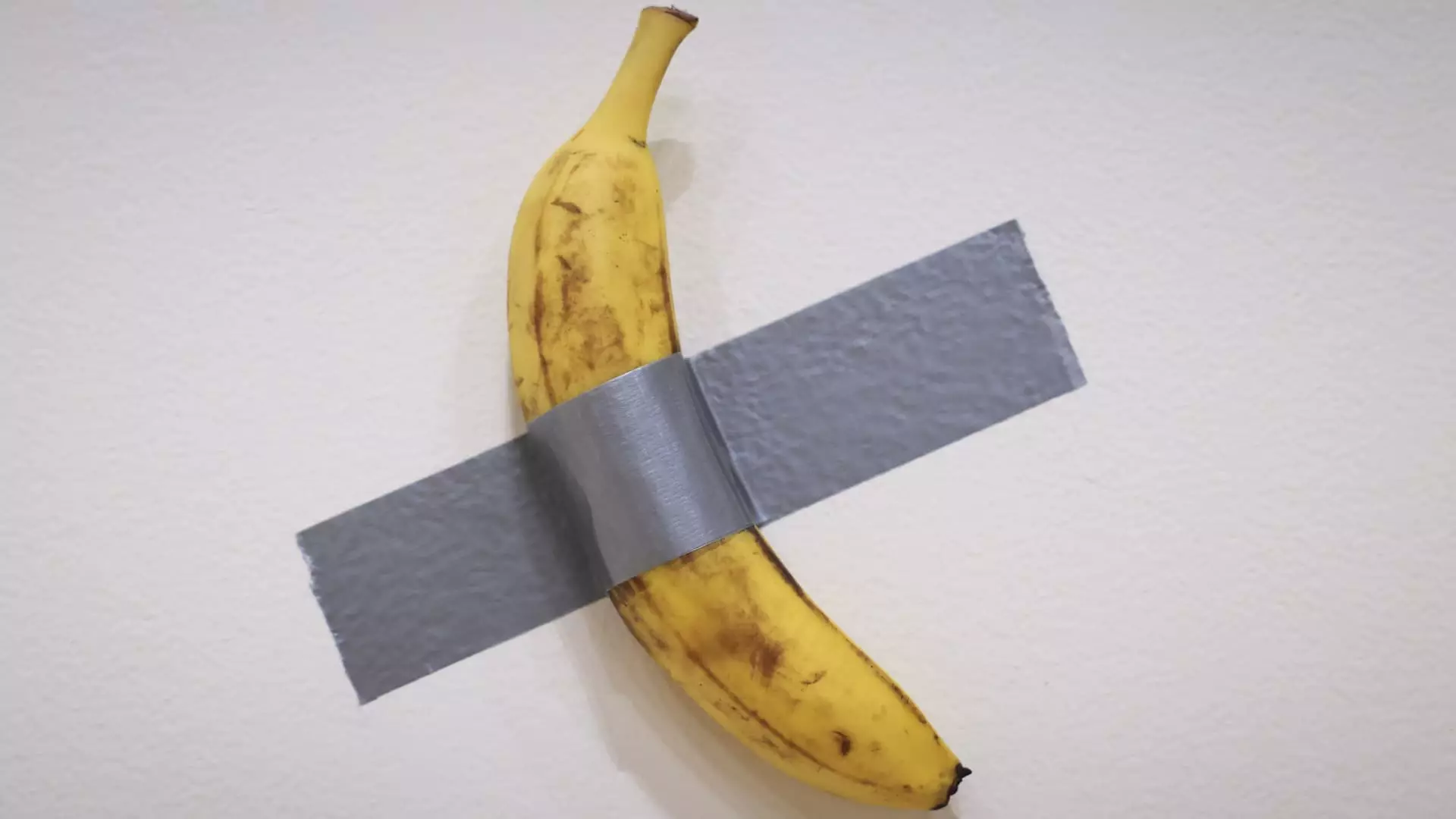The contemporary art world has witnessed an extraordinary convergence of traditional artistic expression, technological innovation, and digital culture, epitomized by the recent auction where crypto investor Justin Sun purchased a banana duct-taped to a wall for an astounding $6.2 million. This eyebrow-raising purchase not only underscores the changing landscape of art ownership but also raises critical questions about value, cultural significance, and the implications of cryptocurrency in the fine arts arena.
Italian artist Maurizio Cattelan’s piece “Comedian” shot into fame in 2019 during its unveiling at Art Basel Miami Beach, capturing the imagination of both art enthusiasts and the general public. Priced initially at $120,000, the artwork became a viral sensation, showcasing how a simple concept can provoke meaningful dialogues about art and consumerism. The banana, emblematic of pop culture and humor, swiftly transcended its physical form, evolving into a commentary on value and meaning in contemporary society.
The artwork’s three editions created for the original auction emphasize the dual nature of art as both an investment and as a medium for discussion. One piece eventually entered the prestigious Guggenheim Collection, while the allure of the remaining two paved the way for future market dynamics within the art world. Sun’s winning bid represents not just a financial transaction but a cultural dialogue about what constitutes valuable art.
Sun’s decision to pay for the banana in cryptocurrency illustrates the growing interconnection between digital currencies and traditional art markets. This transaction challenges conventional perceptions of ownership and value within the art world. The banana itself is not the object of value; instead, it is the certificate of authenticity that affixes Cattelan’s artistic credibility to what is essentially a perishable item. Such that, academics and art critics have drawn parallels between this transaction and the burgeoning market for Non-Fungible Tokens (NFTs), where digital provenance plays a crucial role in establishing worth.
Furthermore, the willingness of the seller to accept crypto as payment is a notable pivot for art transactions, indicating a sea change in how artworks are acquired. It shows the growing acceptance of digital currencies among high-net-worth investors and reflects broader trends seen in other investment sectors, where cryptocurrency is revered for its speculative allure.
The day’s auction highlights a resurgence of interest in the art market after a downturn evident over the previous two years. The high-profile nature of the sale, alongside major transactions at other auction houses for paintings by prestigious artists such as Monet and Rene Magritte, paints a picture of renewed vitality propelled by economic confidence. Economic indicators, such as rising stock values, have bred optimism among affluent collectors eager to diversify their assets.
However, such a rebound raises pressing ethical questions about the nature of art and its commodification. The sale of a banana for millions is charged with commentary on consumer culture’s absurdities. It beckons society to ponder whether contemporary art’s trajectory is veering dangerously towards superficial value assessments driven more by viral trends and market speculation than by intrinsic artistic merit.
Justin Sun’s acquisition of the banana duct-taped to a wall is more than a peculiar art purchase; it represents a unique convergence of art, culture, and technological innovation. As the lines blur between the physical and digital, and as the value of art increasingly aligns with market dynamics rather than artistic merit, the future of the art world will invariably challenge perceptions of value and authenticity. This transaction signifies not just a moment in art history but a broader cultural phenomenon that will resonate through ongoing debates around art, technology, and consumerism well into the future. As society continues to grapple with defining meaningful artistic expressions, the banana serves as a prudent reminder of the absurdities and complexities that define our contemporary landscape.

